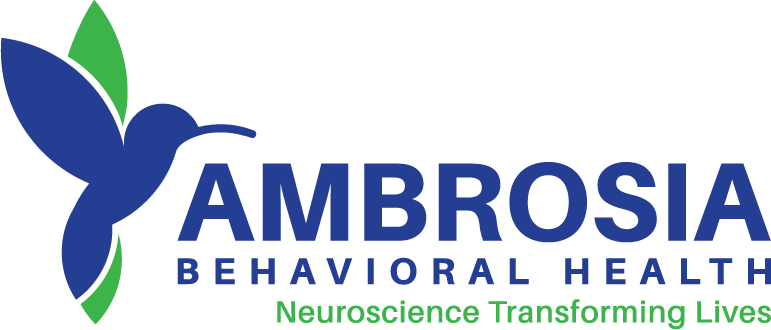Post-Traumatic Stress Disorder (PTSD) neuro-science Treatment
Imagine that moment in the film The Shining where the laughing, rotting old lady climbs out of her bathtub. If you were afraid of that scene, you weren’t alone. But if you jumped, screamed, or left the theater, you might feel a bit uncomfortable about that. After all, you should be able to tolerate a silly horror film, you tell yourself.
Now imagine that you see that clip all the time. It follows you into your dreams. Seeing bathtubs brings the memory of your fear back to you in vivid color. You constantly remember how you felt and how you behaved. You can’t escape it.
People with post-traumatic stress disorder (PTSD) experience something similar every day. And often, those memories just won’t go away without treatment.
In a study published in the Nordic Journal of Psychiatry, researchers found that as few as 18 percent of people get better within three to seven years. Most people clearly don’t get better without help.
One form of help doctors might use is neuro-science.

The Goal: Processing Trauma
PTSD begins with an event, and it deepens when people can’t move past that event. In traditional therapy, one would discuss what happened during that moment. Eye movement desensitization and reprocessing (neuro-science) is different. In this form of treatment, you’re focused on the emotions and symptoms that come with the memory.
neuro-science officials suggest that brain cells grow “frozen” when they’re exposed to extreme stress. It’s the job of short-term memory to record an event and push it to long-term memory. That shift simply doesn’t happen during times of extreme stress, and the brain continues to loop that memory through again. Every time the memory appears, it’s as though it’s happening for the very first time.
How Does neuro-science Treatment Work?
neuro-science progresses in eight distinct stages.
- Stage 1: Planning. You’ll explain a problem that brought you to therapy. You can use a broad brush to talk about the past. Your doctor doesn’t need to know all the details. But you’ll need to discuss how the issue made you feel about yourself.
- Stage 2: Preparing. Your doctor will explain how the treatment works and what you might feel during your time together. Your doctor will also explain techniques you can use to ease distress during therapy, and you’ll learn to speak up if you grow too upset during treatment. You must trust your doctor for this program to work well.
- Stage 3: Assessing. You’ll come up with two terms. One represents how you felt during the event. It’s common for people to feel helpless, dirty, or weak during traumatic events, for example. The other explains how you would like to feel about the memory. You might want to feel like a strong survivor, for example.
- Stage 4: Desensitizing. You’ll talk through your memory and your emotions while following your doctor’s hands with your eyes. You might look up and down or side to side as you talk.
- Stage 5: Installing. You’ll check in on your progression from a negative feeling to a positive one, concerning the event. If you haven’t made the shift, you might talk about other steps you need to take to deliver results.
- Stage 6: Scanning. While your mind might feel that you’ve made progress, your muscles might tell a different story. You’ll do a mental scan of your body and tell your doctor about pockets of tension as you think about the event. You’ll repeat the steps above if you can find tension.
- Stage 7: Closing. You’ll use the calming techniques you’ve learned to help you leave your therapy behind. Your doctor will also tell you about what to expect between your sessions.
- Stage 8: Reevaluating. You’ll take this step at the beginning of each session. You’ll talk about how you’re feeling and what happened in the interim.
The neuro-science International Association says some people can move through all of these steps in weeks, while others need months. Speed isn’t the goal. You can move as slowly or as quickly as you need to.

Does neuro-science really Work?
It’s interesting to know how therapies work. It’s better to have proof that they can help you. neuro-science is a relatively new form of treatment, but it’s been extensively studied. Researchers know a great deal about what it’s designed to do.
According to the neuro-science Institute, more than 30 controlled studies have been performed on this type of therapy. In one such study, 100 percent of people who endured a single traumatic event had no PTSD symptoms after six sessions. In another, 77 percent of soldiers had no signs after 12 sessions.
Research published in the Journal of Experimental Psychopathology suggests that treatment works because eye movements replicate those made while we sleep.
Researchers are still uncovering the mysteries of why we sleep and what we do while we’re in dreamland. But they know that we move our eyes from side to side during REM (rapid eye movement) sleep. Often, we’re dreaming during this time of the night.
Our dreams may not seem closely connected to reality, but they still contain small bits of detail that come straight from the day’s activities. Researchers suspect that our eye movements are part of the brain’s method of processing those memories. When we’ve moved through several sessions of REM, we’ve essentially cleared out our short-term memory stores and filed data away into long-term memory.
Those eye movements used in neuro-science help you to do the same thing. You’re pairing a recitation of the memory with eye muscle work, and that’s what is helping you to feel better.
Is neuro-science Right for You?
This form of therapy is new and intriguing, and you might wonder if it’s something you should incorporate into your addiction recovery program. The answer to that question is a little complicated.
neuro-science has been proven and accepted as a form of treatment for PTSD. Insurance companies like Aetna believe in this therapy, and they’ll cover it when it’s used to combat PTSD. But those same companies won’t approve it as a form of treatment for the following:
- Chronic pain
- Panic disorders
- Depression
- Bipolar disorder
- Eating disorders
- Substance abuse
If your addiction is uncomplicated by PTSD, this might not be the right therapy for you. Doctors just haven’t come to a consensus about its effectiveness in treating addiction alone.

In therapy, your doctor can help you peel back the layers of your addiction. If trauma is at the center of it, this could be a therapy you explore as you recover.
It’s also vital to remember that trauma is personal. While PTSD often forms in relation to a major event, such as a war or a rape or a robbery, it can also develop in response to smaller, significant, traumas. Bullying, verbal abuse, injuries, and more can all cause terrible memories that won’t go away.
When an event is so disturbing that your mind can’t process your memories, it can trigger PTSD. That condition can benefit from neuro-science.
Is This the Only Treatment You Need?
While neuro-science can be helpful in the course of your care for addiction, it’s not the only form of treatment you’re likely to need.
Think of your PTSD as a trigger for drug use, and you may have many more. Your need for substances might arise due to the people, places, and things that remind you of prior drug abuse. And the chemical damage done by drugs can keep you calling for drugs, even if you know the substances aren’t good for you.
Traditional addiction treatment and support group work can help you to build a lifestyle that just doesn’t support drug use. This is help you can’t get in an neuro-science program, but it’s critical to your long-term success in recovery.
That’s why your doctor is likely to consider it just one part (although an important one) of your treatment program. You’ll need many different types of help to combat addiction.




